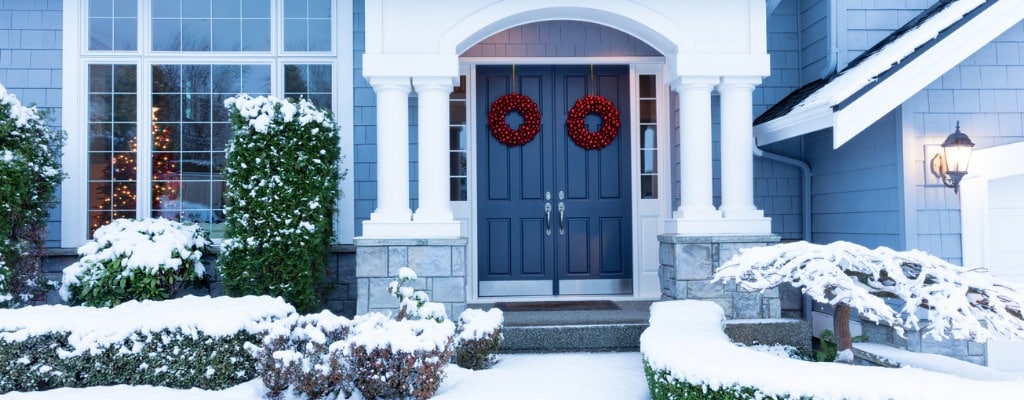 What is a Reasonable Thermostat Setting in the Winter
What is a Reasonable Thermostat Setting in the Winter
The temperature outside is dropping, but we have the luxury of climate control inside. That leads many people to wonder, what is a reasonable temperature for a house in the winter? Is 72 degrees Fahrenheit the ideal year-round? Should you keep it cooler inside or does it need to be hotter to make it comfortable indoors?
Let’s dive into these questions to figure out a reasonable temperature for your house this winter.
The Temperature That Keeps Everyone Comfortable
Some will say a reasonable temperature for winter is the lowest setting where everyone in the house feels comfortable. However, what feels comfortable is relative. Comfortable in a t-shirt and shorts is different than feeling comfortable in flannel pajamas and a robe.
Make it a rule that if someone feels cold they first put on a sweater, robe, coat, etc. If that still doesn’t keep the chills at bay then the temperature can be increased by a few degrees. The goal is to find the lowest temperature where everyone feels reasonably comfortable without having to keep adding on layers.
Is 72 degrees Fahrenheit a reasonable temperature for heating in the winter?
The pace of thermal energy loss is slower when the temperature within the house is cooler. If there are occupants inside the house, it is recommended that homeowners keep their thermostats between 68 and 72 degrees to provide ideal comfort.
Is a house at 68 degrees cold?
The optimal house temperature for both comfort and satisfaction is somewhere between 68 and 78 degrees Fahrenheit, depending on the season.
Is a thermostat set at 70 degrees Fahrenheit too cold in the winter?
It’s advisable to keep your thermostat between 70 and 72 degrees Fahrenheit. Most air conditioners aren’t meant to cool a house below a certain temperature, and the system may freeze.
Do keep in mind if anyone has medical conditions that require constant temperature regulation that takes precedence. If there’s a baby in the house you’ll need to keep it warmer than recommended because babies can lose heat up to four times faster than adults. The elderly also feel the effects of the cold more than younger people.
The Best Temperature in Winter for Energy Efficiency
If you’re concerned about utility bills you may want to lower the temperature a bit both when you’re at home and when you’re away. We recommend the following temperatures:
- The ideal temperature when people are at home is around 68 degrees Fahrenheit.
- The ideal temperature when everyone is away from home is around 60 degrees Fahrenheit.
- The ideal temperature when everyone is asleep is around 62 degrees Fahrenheit.
Those who are cold-natured may want to ease into it by setting the temperature to 72 degrees. Every few days or so lower it by 1 degree to get acclimated.
How to Keep Cold Air Out of Your Home
Cover any gaps or holes on the outside of your house, especially near wires and air vents. Install weatherproof stripping to doorways and examine for cracks in windows. Have door shut as often as feasible and urge family and friends to do the same.
In the winter, what temperature should I set my thermostat to at night?
The US Department of Energy recommends a nighttime indoor temperature of 65 degrees Fahrenheit. Lowering the temperature on your thermostat at night may potentially help improve your sleep. When it’s too cold or hot our body temperatures are thrown off, which can lead to more restless sleep.
Avoid lowering the temperature below 56 degrees F even if you’ll be away for a few days on a holiday vacation. Anything lower than that increases the risk of frozen pipes that can burst. You’ll also need to keep it closer to 60 degrees if there are houseplants or pets indoors.
The rule of thumb is that for every eight hours that the temperature is turned down you’ll reduce energy use by 1% per degree. So, if you bump the temperature down from 68 degrees to 60 degrees each night while you’re sleeping you’ll save 8% on your utility costs. Also, get a furnace checkup and tune-up before winter arrives to get your furnace prepared for the season.
What should I set my thermostat to in the winter to save money?
Adjusting your thermostat before you sleep or leave the house can help you save money on your cooling bills. Installing an automated cutoff or programmable thermostat is also another option. Setting your thermometer down 7°-10°F for 8 hours a day will save you up to 10% on heating and cooling costs per year according to energy.gov
Program the Thermostat for the Winter
Once you decide on the ideal temperatures while you’re at home and away, it’s time to program your thermostat. Doing so can help you save money on your electric bill. It’s also very convenient since you can set it now and forget about it for the rest of the winter.
Make sure to program times for:
- When you are away at work.
- When you are asleep.
- Times when you are regularly out of the house such as going to church or the gym.
- The weekends.
Set the thermostat so that the temperature goes up about 30 minutes before you get home and decreases a few minutes before you leave or go to sleep. Check out this article for more tips on how to program your thermostat for energy savings.



